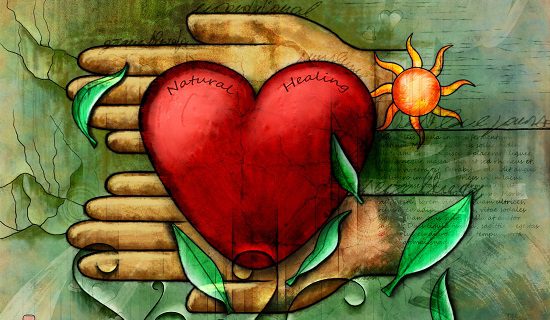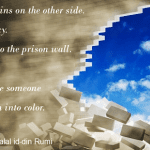 The following post is by my colleague, Shams Tara Wesley, Acupuncture Physician. Shams is co-facilitating the program for Healing Racism & Bigotry. You’ll be hearing a lot from her during this 4-week program which began on August 10th, God willing. She’ll be on the livestream calls, interacting with you in the facebook group for the program and contributing regular posts. Thank you for joining us for any part of this program. You are welcome to participate in any way you feel called. Please read on…” Thanks! Mastura
The following post is by my colleague, Shams Tara Wesley, Acupuncture Physician. Shams is co-facilitating the program for Healing Racism & Bigotry. You’ll be hearing a lot from her during this 4-week program which began on August 10th, God willing. She’ll be on the livestream calls, interacting with you in the facebook group for the program and contributing regular posts. Thank you for joining us for any part of this program. You are welcome to participate in any way you feel called. Please read on…” Thanks! Mastura

Hi everyone! How is it going with your mapping of passive and active violence every day? Are you developing a greater awareness of the thoughts, beliefs, emotions, and speech that is racist or passively violent? Please share your experiences in the Facebook group or in the comments section below; Mastura and I would love to hear how it’s going for you.
Today we’re going to look at trauma and how it can contribute to racism.
We All Recreate Trauma
A trauma is an event that caused you shock or pain and has had a significant, lasting effect upon you. You are probably familiar with the idea that victims of trauma, whether physical, sexual, emotional, or verbal, are highly likely to recreate the trauma. When people recreate trauma, we can do so in the victim or oppressor role, regardless of how we originally experienced the event.
In the book Psychiatric Clinics of North America, Volume 12, Number 2, Page 389, the author explains:
Many traumatized people expose themselves, seemingly compulsively, to situations reminiscent of the original trauma. These behavioral reenactments are rarely consciously understood to be related to earlier life experiences.
Freud thought that the aim of repetition was to gain mastery.
This points to the compulsion we feel–often subconsciously–to recreate traumas we’ve been through as children and as adults. During trauma we often experience strong emotions, like shock, horror, terror, rage, great sadness, or loss/grief, along with sensory input of the event: sounds, visual snapshots, smells, sensations, etc. These emotions and pieces of sensory input are so strong that they can imprint our minds, hearts, souls, and bodies….and they remain there until we bring healing and resolution to them.
During childhood trauma, the neural pathways that were activated and used most often during the trauma continue to be easily activated, inhibiting the growth and maturation of additional neural pathways and stimulating the recreation of the trauma.
One of the big problems this creates on a spiritual level is the inability to react to new situations without bias. Because the areas of the brain that were active during the trauma are more easily stimulated, we are more easily triggered into the negative emotions and thoughts of the trauma.
Trauma Recreation Is an Attempt to Heal
I am in Freud’s camp: I believe we recreate trauma in attempt to release and heal it. The human body has amazing self-healing mechanisms and is always trying to heal. The mind, heart, and soul are the same–they want health. They strive toward peace. With God’s love, guidance, and support, we can release trauma and regain the capacity for authentic, non-biased responses.
So why does it seem like we often recreate trauma in a way that creates more pain and dysfunction, not less?
Healing the Root Wound
When we recreate the same trauma over and over again, we haven’t been successful at healing the root wound. Here’s an example: Jenna has parents who frequently fight. Jenna’s perception of the fights is that Daddy and Mommy yell at each other, but Daddy yells more loudly, is more aggressive, and eventually always “wins.” After a fight, Mommy will often cry and seems distant and unhappy for a day or two. At times, Mommy has spoken bitterly about men to Jenna.
Watching the way Mommy and Daddy fight creates a belief that Mommy is weaker than Daddy. Over time, Jenna applies to herself, as well (“I am weaker than a man when in a power struggle.”). Then, this gets generalized into the belief that women are weaker than men. It teaches Jenna that she, and all women have less power, and if she’s in a situation where she feels powerless, the appropriate response is to store up anger and resentment (as her mother did).
It hurts Jenna to see her father being aggressive toward her mother. It hurts Jenna to see her mother always “losing.” Jenna dislikes the beliefs that she now has but doesn’t know what else to believe, since this is what she is witnessing day in and day out.
Fast forward 15 years when Jenna is in college. Jenna meets Ben, who seems great. Then, Jenna and Ben get into their first fight. The argument gets heated and Ben yells loudly at Jenna. In the presence of a situation similar to what she experienced watching her parents, Jenna gets triggered and takes on her mother’s role. She fights back but she eventually capitulates and ends up crying (as her mother did). This becomes the pattern for Jenna’s and Ben’s arguments.
Then perhaps in a future relationship, Jenna meets a man who subconsciously reminds her of her mother. In this relationship, Jenna takes on the role of her father, being the more aggressive and the “winner” of these fights.
As I’m sure you can see, there’s no “winner” in any of the fights Jenna has with her partners, because Jenna is just recreating her perception of her parents’ arguments and power dynamic. Until she heals the wounds that were originally created in her witnessing of their relationship, she will continue to attract men who embody either one side or the other of the dynamic, thus recreating the trauma.
Don’t lose hope, though! We’re going to explore how to heal trauma when we get to the second half of our program, where we learn the Sufi spiritual practices of Remembrance (Dhikr) and Tawba (Repentance). We access a trauma, return the place of pain to God, and ask for Divine Healing, Mercy, Forgiveness, and Peace. We will let healing in and allow it to transform us, which is an art in itself. God willing, after that we are restored to wholeness in that place. Sometimes, we have to do this process more than once when dealing with trauma.
How Does Trauma Affect Racism?
For now, though, let’s consider how our own traumas have affected our inter-racial relationships, and our thoughts, beliefs, and emotions regarding race.
First, any traumas you experienced involving a power differential may be influencing your perception of People of Color (POC).
If you are white and experienced a trauma in which you identified as a “victim,” you may be projecting that onto a Person of Color. You may make the Person of Color the “victim” in your interactions and act as if you do (and should) have power over them. Often, this occurs because white people have a social, cultural, educational, political, and economic advantage as a result of white privilege. Projection of this nature can be deliberate or subconscious.
An example of a deliberate attempt to put yourself in the “winner” or oppressor role would be to verbally or physically attempt to dominate a Person of Color.
An example of a subtle attempt to put yourself in the “winner” or oppressor role would be to view the Person of Color as somehow less-than. You consider yourself more intelligent, skilled, lovable, valuable, elevated, better, etc. without really considering it. This happens automatically, based in a desire to be on the winning side of the trauma you are continually recreating. And again, this is possible because of white privilege.
Questions to Ask Yourself
-
Consider each of the traumas you have experienced, one at a time. In each one, did you feel that you were the victim or oppressor?
-
In your interactions with People of Color, do you automatically feel at a slight advantage or disadvantage? Does this vary, depending upon the situation? Break it down by gender, race, ethnicity, age, etc., so that you can see if there are other factors affecting your perceptions.
-
Do you see a connection between any of the traumas you’ve experienced and the deep-seated feelings, thoughts, and beliefs you have about People of Color?
I hope this post has helped you uncover more of the root causes of any racist thoughts, beliefs, and emotions you may harbor. Peace, until we meet again.
Shams Tara Wesley
PHOTO CREDITS: Adobe Stock © Andrea Danti #49407265











